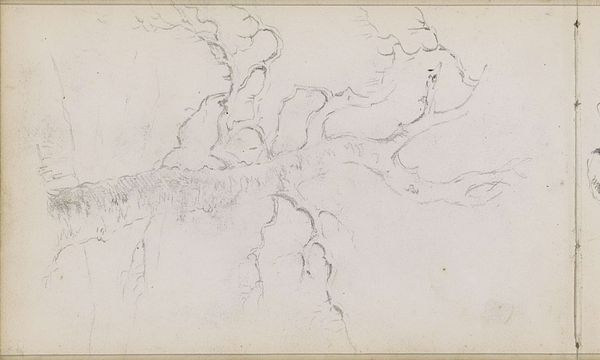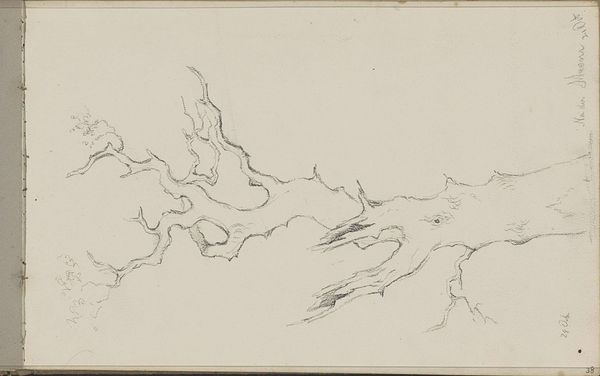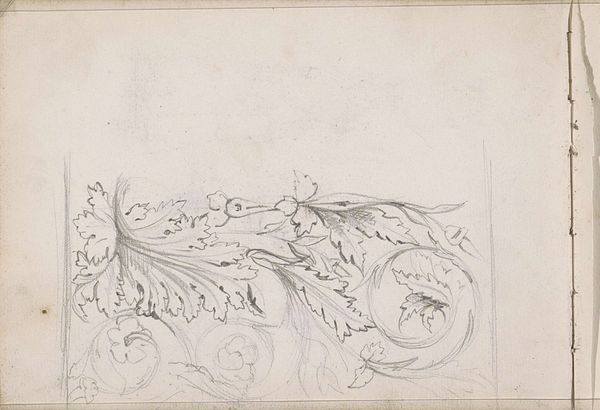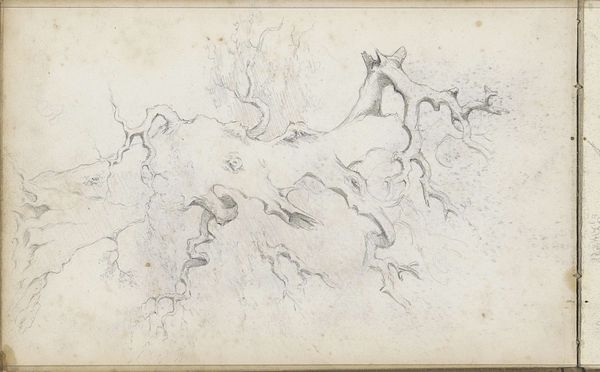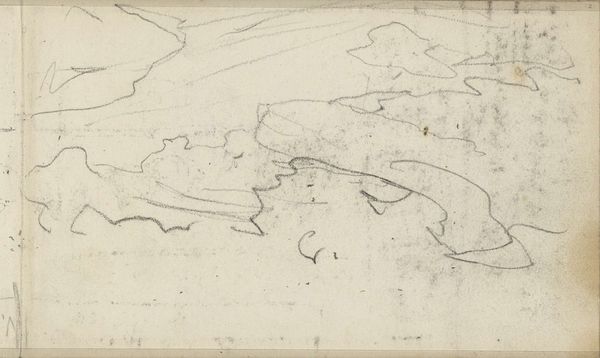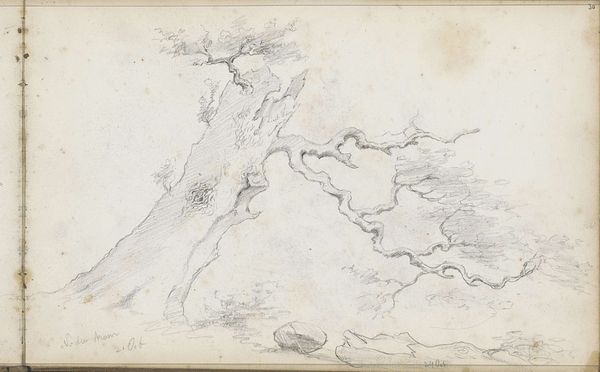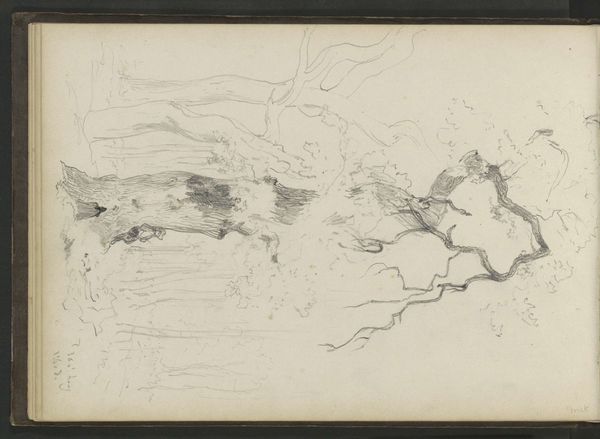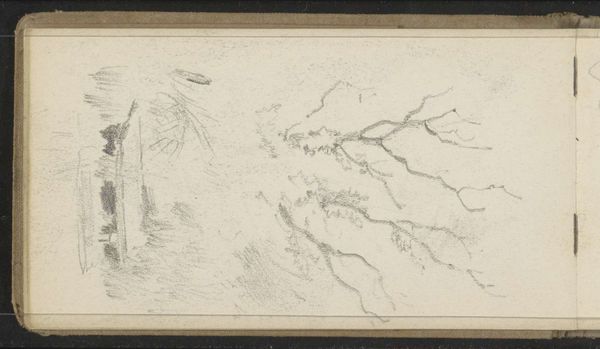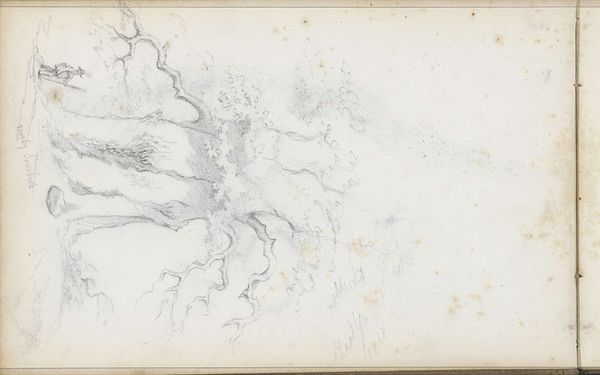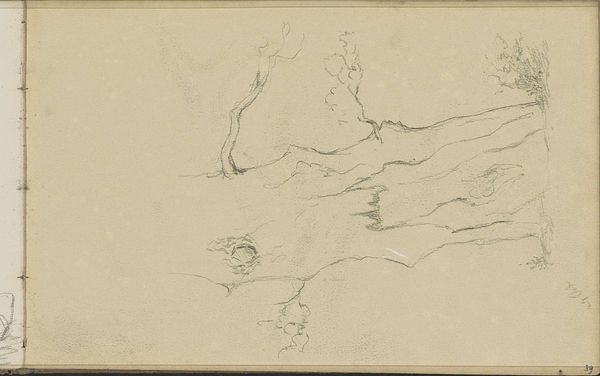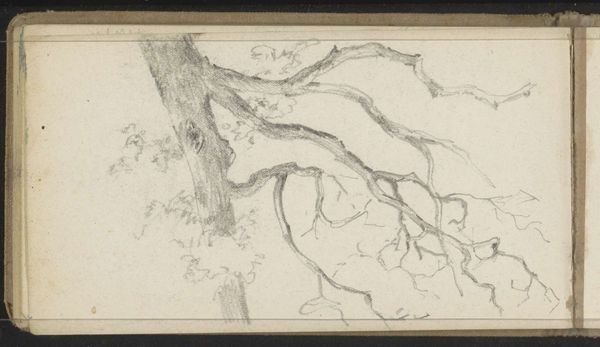
Dimensions: height 184 mm, width 282 mm
Copyright: Rijks Museum: Open Domain
Curator: Today we're looking at Willem Cornelis Rip's pencil drawing, "Man on a Bench Beside a Tree", created in 1874. Editor: Oh, my goodness, this sketch has the same spooky energy as a really old tree you'd find in a fairy tale – all twisty branches, it feels like something could whisper secrets from those boughs. Curator: Rip employs a very deliberate, almost methodical approach to depicting nature. If you look closely, you’ll see how the material quality of the pencil shapes our perception. Its graphite, readily available at the time, allowed for these accessible, quick studies. Editor: Quick is an understatement! I love the economy of lines – the sketch captures this feeling of gnarly old growth, but it is implied as much as explicitly stated. There's a dreamy quality to the sketch too, though it is the very quick observation and technique used that conveys its feeling of fleeting reality. Curator: It's interesting that you mention that "dreamy quality," because Romanticism, from which the image stems, often sought to evoke emotional responses through depictions of nature. The labor is present but understated; we see the hand, the deliberate craft, and its purpose of achieving the affect, almost. Editor: Definitely. And look how he’s almost personified the tree's branches. You see that swirling section right in the middle? It’s staring right at you! It could be something lurking, but I feel a strange invitation into the dream. Curator: Yes, by focusing so intensely on line, Rip blurs the distinction between observer and observed. The viewer participates through recognition of artistic methods. Consider where this sits regarding mass production; Rip's artwork demonstrates art that directly opposes industrial making. Editor: So in a way, it is an intentional pushback, in all its romanticism, to say something of a different spirit? Makes me wonder who was originally seated on the bank next to this peculiar spirit in 1874! Curator: Indeed. Through form and medium, Rip has sparked more inquiry than one may originally perceive at a cursory glance. Editor: And now, after truly considering the means of its creation, the labor involved and the possible rejection of industry and modernity embedded in the artwork itself, it is quite the fascinating and intimate glimpse.
Comments
No comments
Be the first to comment and join the conversation on the ultimate creative platform.
